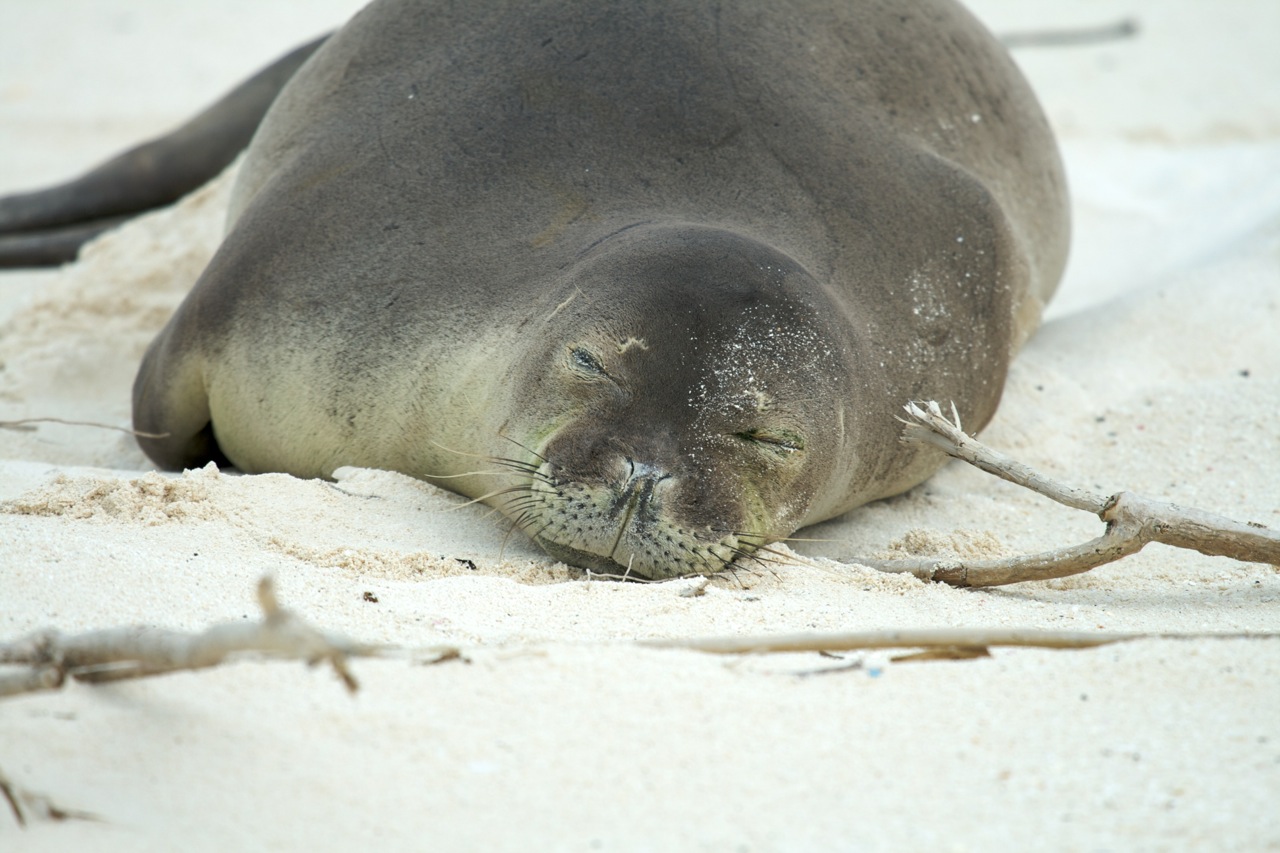January was an exceptional month for the AFAST (Atlantic Fleet Active Sonar Training) marine mammal and sea turtle survey team. In collaboration with the Scripps Institution of Oceanography’s Whale Acoustic lab, The University of North Carolina Wilmington, and the University of St. Andrews, our Duke team is responsible for vessel-based surveys in Navy training sites along the southeast coast including waters off Onslow Bay, NC and Jacksonville, FL. The aim of this project is to provide the Navy with baseline data on the density, abundance, distribution and seasonal movements of marine mammals and sea turtles in this area (including the proposed Undersea Warfare Training Range – USWTR – off Jacksonville, FL).
 In January, we surveyed five days off Jacksonville, FL, covering over 540 km within the proposed USWTR area. This area extends from 65 – 160 km offshore, and therefore is a difficult area to access and work in without spending a lot of time transiting to and from shore. We use the 70 ft research vessel, R/V Stellwagen, as a working platform that can stay at sea for several days, even in inclement weather. Once we are offshore, we deploy a smaller vessel (R/V Starbuck) from the Stellwagen that allows us to approach animals to obtain photographs and biopsy samples (tiny pieces of skin and blubber taken with a specially designed dart fired from a crossbow). Questions regarding population structure, feeding ecology, and contaminant levels can be addressed from these samples.
In January, we surveyed five days off Jacksonville, FL, covering over 540 km within the proposed USWTR area. This area extends from 65 – 160 km offshore, and therefore is a difficult area to access and work in without spending a lot of time transiting to and from shore. We use the 70 ft research vessel, R/V Stellwagen, as a working platform that can stay at sea for several days, even in inclement weather. Once we are offshore, we deploy a smaller vessel (R/V Starbuck) from the Stellwagen that allows us to approach animals to obtain photographs and biopsy samples (tiny pieces of skin and blubber taken with a specially designed dart fired from a crossbow). Questions regarding population structure, feeding ecology, and contaminant levels can be addressed from these samples.
Over the course of January’s surveys, we recorded 25 cetacean sightings, consisting of 164 individual bottlenose dolphins (Tursiops truncatus) and Atlantic spotted dolphins (Stenella frontalis). We collected 21 biopsy samples and 670 photo-ID images, which we will use to ‘recapture’ or match individual dolphins seen from previous surveys. We made 19 sightings of sea turtles – mostly loggerheads (Caretta caretta) and one leatherback (Dermochelys coriacea). Additionally, we deployed a HARP (High-frequency Acoustic Recording Packages), a passive acoustic monitoring device that will allow us to describe patterns of distribution and habitat use of vocalizing cetaceans.
And to close out a highly productive month, on January 31st we conducted a marine mammal and sea turtle survey in Onslow Bay, NC. We decided to survey farther offshore (~130 km) than normal, hoping we would encounter more interesting animals in the deep water (1000 – 3000 m). We saw only two species that day, but one was a rare sight for Onslow Bay. After searching for close to an hour for an elusive whale, we saw white water in the distance. We weren’t able to approach the animals before they dove, but we did get close enough to take several photos that confirmed them as beaked whales, Mesoplodon spp. Beaked whales are highly elusive, extremely deep and long-diving animals, of which very little is known. Luckily for us, this sighting occurred near our Onslow Bay HARP, and we hope to further confirm this sighting with the acoustic data.







